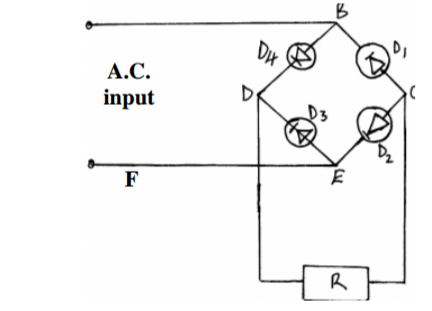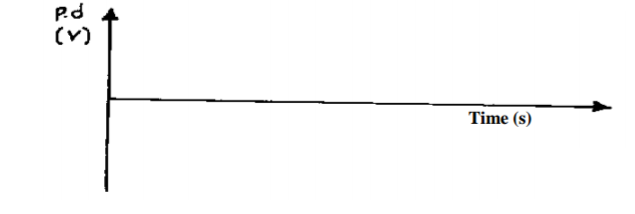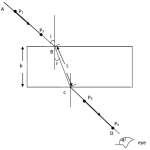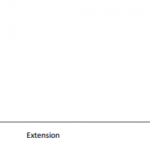KNEC KCSE Physics Paper 2 – 2014 Gatundu Mock
2014 Gatundu Mock
Physics Paper 2
SECTION A (25 Marks)
Answer all questions
Figure below represents a step in charging a material A by induction.
(i) What is the charge on B? (1 mk)
(ii) Explain what happens at C. (1 mks)
2 marks
Figure below shows a ray of light incident on a face of semi-circular glass block.
Determine the angle of incidence i (refractive index of glass = 1.5)
2 marks
A metre rule is suspended by a thread such that it is in equilibrium balanced by a permanent
magnet attached to the metre rule and some weight as shown in fig. bellow
If the soft iron is fixed to the bench, state and explain the effect on the metre rule when the
switch is closed.
2 marks
The figure below shows the image I, formed in a convex mirror. Complete the ray diagram to
show the position of the object.
2 marks
The graphs in the figure below represent the same wave.
Determine the velocity of the wave.
2 marks
Determine the ammeter reading when both switches are closed.
2 marks
An immersion heater rated 1.5KW is used continuously for 30min per hour per day. Calculate
the cost per week per ksh 6.70 per unit.
2 marks
The figure below shows the relationship between the reciprocal of the object distance (1/u)and the reciprocal of the image distance (1/v) for an object placed in front of a concave lens.
From the graph, determine the focal length of the lens.
2 marks
In the circuit below C1= 4 F, c2= 3F and c3 = 1F . Given that V= 12V, calculate the
charge stored on the 3F capacitor C22
2 marks
What is the difference between a hard and soft magnetic material in terms of the domain
theory.
1 marks
Complete the following table:
| Radiation | Source | Detector | Application |
| X- rays | X-ray tube | _ | _ |
| Ultra violet | The sun | _ | _ |
2 marks
The figure below shows a simple cell
Identify electrode A and solution B.
2 marks
The set up below was used by a student to investigate interference in sound waves.
If the speakers are connected to an audio generator, state what is observed when one walks along
AB and OC.
2 marks
SECTION B (55 Marks)
Answer all questions
Figure below shows an x-ray tube
(a) (i) Name the elements used in making the parts labeled A and B. (2 marks)
A:
B:
(ii) Explain the use of the part labeled C. (2 marks)
(iii) Explain how the x-rays are produced. (2 marks)
(iv) Why is the x-ray tube evacuated? (1 mark)
(b) The penetrating power of x-rays is normally varied depending on the intended use. Explain
briefly how this is done. (2 marks)
(c). An x-ray tube is operating with an anode potential of 20KV and a current of 40mA.
Determine the number of electrons hitting the target per second. (2mks)
( The charge of an electron is 1.6 x 10-19C)
11 marks
In an experiment to find the relationship between frequency of radiation and kinetic energy of
photoelectrons in a photoelectric device, the following graph was obtained.
Use the graph to answer the following questions,
(a) (i) Determine the threshold frequency. (1 mark)
(ii) Find the plank’s constant h. (2 marks)
(Take the charge of an electron to be 1.6 x 10-19 C)
(iii) Calculate the work function of the metal in joules. (2 marks)
(b) The threshold frequency of sodium is 4.8 x 1014 Hz. Calculate the work function of sodium.
(Take the plank’s constant to be 6.6 x 10-34Js) (2mks)
(c)The figure below shows a bridge rectifier.
(i) Define the term rectification. (1 mark)
(ii) Describe how the illustrated rectifier works. (2 marks)
(iii) State the modification that can be made on the arrangement to improve the quality of the
output. (1 mark)
(iv) Sketch on the areas below how the improved output is displayed on a C.R.O screen.
(1 mark)
12 marks
(a) State the Faraday’s Law of Electromagnetic Induction. (1 mk)
(b) Coil carrying a large alternating current is placed close to a iron ring suspended freely on a
silk thread as shown in the diagram below.
(i) Explain why the ring is repelled continuously. (2 mks)
(ii) State and explain what would be observed when a direct current is used instead of an
alternating current. (2 mks)
(c) The diagram below is a simplified illustration of an E.M.F. generator.
(i) Show the direction of induced current through R when the coil is in the position shown in the
diagram. (1 mk)
(ii) State and explain three ways of increasing the amount of induced current in this set up.(2 mks)
(iii) On the axes below, sketch a graph to show how potential difference across R varies with
time. The coil is initially horizontal.(1 mk)
(d) State and explain any two ways by which energy losses are reduced in transformation. (2 mks)
(e) The figure below shows a step – down transformer connected to a 240V mains socket. The
primary coil P has 4000 turns while the secondary coil has 200 turns. The efficiency of the
transformer is 60% and a current of 50A flows through P. Calculate the current through S.(2 mks)
13 marks
(a) Figure below shows the diagram of a Geiger – Muller tube connected to a power supply and a pulse counter.
(i). Why should the Argon gas be at low pressure? (1mk)
(ii). State the purpose of the bromine gas in the tube (1mk)
(b) Uranium – 235 was bombarded with a neutron and fission took place in the following
manner:
Determine the values of a and b. (1 mks)
(c) A radioactive element A of half life 31 days decays to element B. A sample of A of mass 32g
is kept in a container. Assuming B is stable; calculate the mass of B that will be in the container
after 124 days. (2 mks)
(d) The figure below shows how a beam of electrons would be deflected by an electric field
produced between two metal plates.
(i)Draw the missing connections. (1mk)
(ii)Explain why the beam of electrons is deflected in the direction shown. (1mk)
(iii) State how the deflection system of a television system differs from that of a CRO. (1mk)
(iv) Give the reason why it is possible to have a wider screen in the television set than on the
CRO. (1mk)
9 marks
(a) The figure below shows an object placed in front of a thin lens. The focal length of the lens is 10cm.The screen is adjusted until an image which is magnified 5 times is obtained. From the information
(i)Which type of lens was in the experiment. (1mk)
(ii)State any other characteric of the image formed. (1mk)
(iii)Find the value of u (2mks)
(b) The figure below shows an object and an image formed by a certain lens.
By drawing suitable rays
(i) Locate the position of the focal point F of the lens. (1mks)
(ii)Find the value of focal length f. (1mk)
(c) The figure below shows a defective eye object,O Image
(i) state the cause of the defect. (1mk)
(ii)What type of lens is used to correct the defect? (1mk)
(d)State any two similarities between an eye and a camera. (2mks)
10 marks
































hi how can I get answers